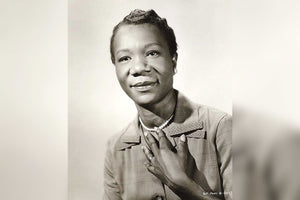Who Is Lady Gregory?
Birthday: March 15, 1852
Who is Lady Gregory?
Lady Augusta Gregory is one of the most iconic Irishwomen who is known for her literary works and the formation of the Abbey Theatre Company and the Irish National Theatre through the collaboration of Synge and Yeats. Before she married Sir William Gregory of Coole Park, her name was Isabella Augusta Persse.
Born on March 15, 1852, she had lived a normal life until she got married to a member of the Parliament. After the death of her husband in 1892, she began to collect history and legends about the west of Ireland and translated them into the Kiltartanese dialect. It was in 1896 when she met Yeats which boosted her career through their professional partnership.
5 Facts About Lady Gregory
- Lady Gregory was born from a higher class under the rule of the British Empire but she loathed it. Her socio-political views were evident in her literary works.
- Lady Gregory was dubbed as the ‘godmother of the Abbey Theatre’.
- 3 months after her death, all contents of her home in Coole Park were auctioned and in 1941, almost 9 years after, the house was demolished.
- Most of her journals and diaries have been published later on and served as a great source to Irish literary history for 30 years since the start of the 20th century.
- In November 2020, Trinity College Dublin, whose 40 busts in its library were represented by men only, announced that 4 additional busts were commissioned, comprising of women including Lady Gregory.
Lady Gregory Biography
Early Life
As the youngest daughter of the Persse family, she lived a somehow comfortable life. She was mainly homeschooled, but it was their family nurse, Mary Sheridan, who became her first great influence through the introduction of the legends and history of their area.
On March 4, 1880, at nearly 28 years old, she married Sir William Henry Gregory.
Their age gap is 35 years, with Sir Gregory already a widower at that time. He was a former Governor of Ceylon, now known as Sri Lanka, and had been a Parliament member. The house at Coole Park, where the married couple was staying, had a huge library and art collection while Lady Gregory was still exploring her passion for literature.
Soon, in 1881, Robert Gregory was born. He was the couple’s only child, but during the first World War, he was killed while serving as a military pilot. He was later on given a tribute by Yeats through his poems.
Writing Career
Lady Gregory wrote many literary pieces while she was married. There were some that were inspired by her love affair (‘A Woman's Sonnets’), some that were politically themed (a pamphlet entitled ‘Arabi and His Household’), and some were unpublished short stories. When Sir Gregory died in 1892, Lady Gregory was the one editing his autobiography.
She then had taken interest in collecting the history and legends that were scattered in the west of Ireland. She successfully translated her works into Kiltartanese, which is a dialect from Kiltartan, Galway.
In 1986, through her neighbor Edward Martyn, she met William Butler Yeats and after occasional discussions, the three of them agreed to build the Irish Literary Theatre in 1899.
Founding of the Abbey
The Irish Literary Theatre had run its course in 1901 due to the lack of funding. However, with the inclusion of William and Frank Fay, Annie Horniman, and John Millington Synge in 1904, all of them managed to form the Irish National Theatre Society.
Horniman was the main source of funding and her offer to use a building she and William Fay purchased in Lower Abbey Street became the solid start of the group’s momentum.
However, since Horniman was not a true resident in Ireland, the building was under Lady Gregory's name. All members of the group contributed in their own ways and Lady Gregory’s cup of tea was comedy.
The society was later named the ‘Abbey Theatre’ mainly because of the location. Lady Gregory liked to create one-act comedies and among her works that stayed relevant until today were ‘Spreading The News’ (1904), which was taught in American high schools, ‘The Rising Of The Moon’ (1907), and ‘The Workhouse Ward’ (1908), which both were favorites in the Abbey Theatre.
Her other works had a lot of legend and historical themes like the ‘Cuchulain Of Muirthemne’ (1902) and the ‘Kiltartan History Book’ (1909). She also produced other non-theatrical literature such as the ‘Kiltartan Poetry Book’ (1919) and the ‘Visions And Beliefs In The West Of Ireland’ (1920). To sum it up, she influenced what Irish mythology’s contents are as of today.
Retirement And Death
The Abbey Theatre was the breeding ground of writers for the Irish Literary Revival, partly due to the undying passion of Lady Gregory to build a pioneering theatre that showcases local talents. She remained the theatre’s board member and active director until her retirement in 1928.
At that time, she had written more than 19 plays that were mainly produced at the Abbey Theatre. In her last years, she resided in her home at Coole Park but sold it anyway to the Irish Forestry Commission, wherein she became its lifelong tenant. Lady Gregory died of breast cancer on May 22, 1932 at the age of 80.
![]() Fast Shipping
Fast Shipping![]() Subscribe to our Newsletter
Subscribe to our Newsletter![]() 🌟 New Global Competition 🌟
🌟 New Global Competition 🌟















